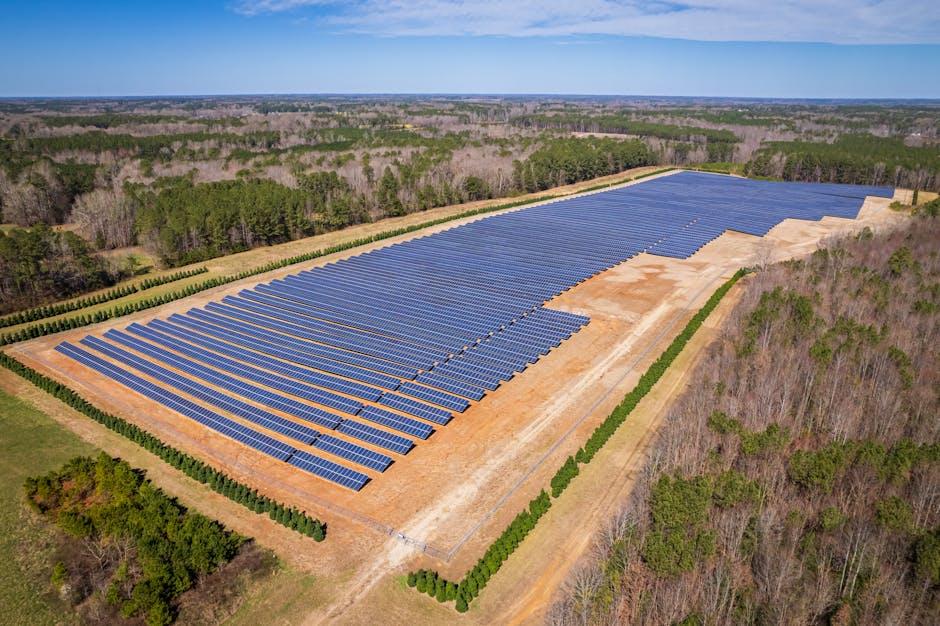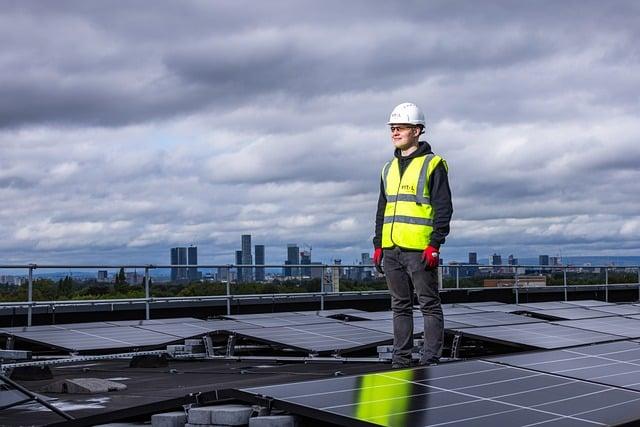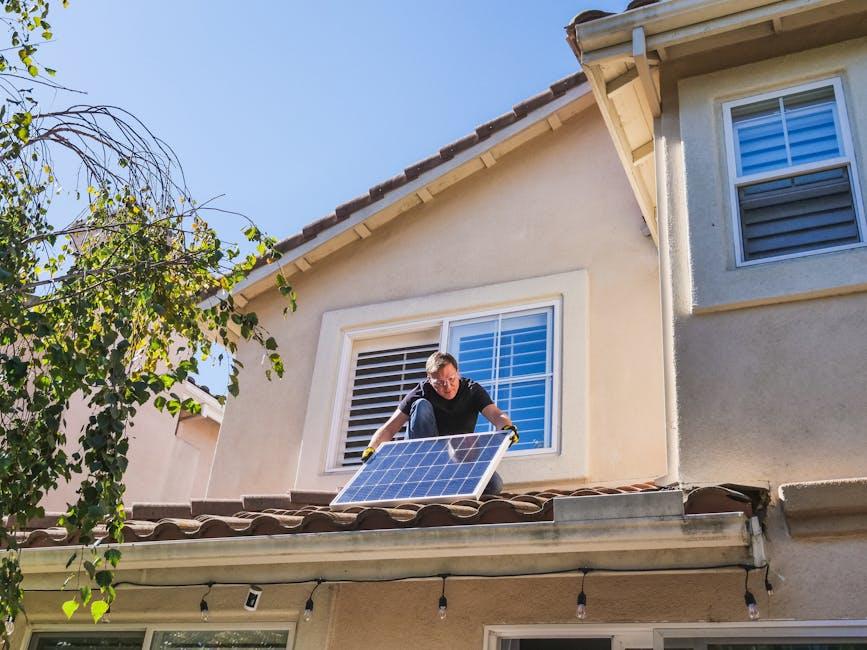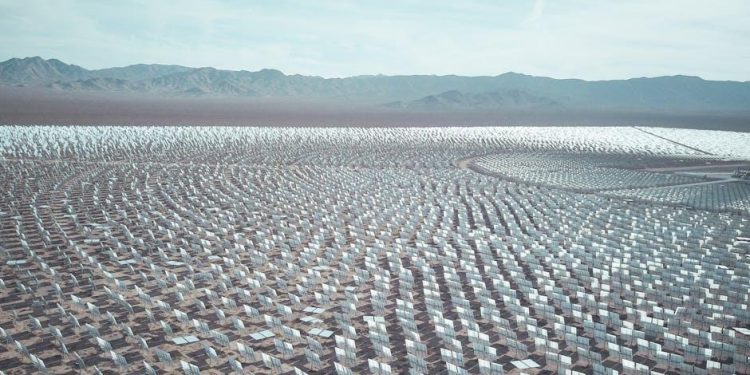In the ever-evolving landscape of renewable energy, solar panels have emerged as a beacon of promise, offering a sustainable alternative to traditional power sources. As businesses increasingly pivot towards greener practices, the question arises: are solar panels durable enough for long-term commercial use? This inquiry delves beyond the shimmering allure of photovoltaic cells, venturing into the heart of their resilience and longevity. In this article, we explore the robustness of solar technology, examining whether these sun-soaked devices can withstand the test of time and the rigors of commercial demands. Join us as we shed light on the durability of solar panels and their potential to power the future of industry.
Understanding the Lifespan of Solar Panels in Commercial Settings
In the ever-evolving landscape of renewable energy, solar panels have emerged as a cornerstone technology, promising sustainable and efficient power generation. When it comes to commercial applications, the durability and longevity of these panels are crucial. Solar panels, under optimal conditions, can last 25 to 30 years. However, their lifespan is influenced by several factors including environmental conditions, installation quality, and maintenance practices.
- Environmental Conditions: Harsh weather, such as hailstorms or extreme heat, can affect the panels’ performance and longevity. It’s vital to consider the local climate when planning installations.
- Installation Quality: Proper installation ensures that the panels are securely mounted and aligned for maximum efficiency. Faulty installation can lead to issues like water ingress or mechanical stress, which may shorten their lifespan.
- Maintenance Practices: Regular cleaning and inspections are necessary to keep panels operating at peak efficiency. Dust, debris, and shading from nearby structures can reduce their effectiveness over time.
Commercial entities should also weigh the benefits of advanced technologies such as bifacial panels and tracking systems, which can enhance energy output and potentially extend the panels’ operational life. While initial costs may be higher, the long-term savings and sustainability benefits are often worth the investment.

Evaluating Weather Resistance and Material Integrity
Solar panels are subjected to a range of environmental factors that test their endurance over time. Weather resistance is a crucial aspect when assessing their suitability for long-term commercial use. Panels must withstand various conditions, such as:
- Extreme temperatures: Both intense heat and freezing cold can affect the efficiency and structural integrity of solar panels.
- Heavy precipitation: Rain, snow, and hail require panels to be both waterproof and robust against physical impact.
- High winds: Panels need to be securely mounted to prevent damage from strong gusts.
Additionally, material integrity plays a significant role in their durability. Manufacturers often use tempered glass, sturdy aluminum frames, and anti-corrosive coatings to ensure panels can resist weather-induced wear and tear. Over the years, technological advancements have enhanced the materials used, making modern solar panels more reliable than ever. The lifespan of these panels can exceed 25 years, provided they are maintained properly, highlighting their potential for sustained commercial use.

Maintenance Strategies for Maximizing Solar Panel Efficiency
To ensure solar panels remain effective and efficient over time, implementing a comprehensive maintenance plan is crucial. Regular inspections are key; they help identify potential issues such as loose connections, physical damage, or soiling. Cleaning the panels periodically, especially in areas prone to dust, pollen, or bird droppings, can significantly enhance their performance. Utilize soft brushes or low-pressure water sprays to avoid scratching the surface.
Consider setting up a monitoring system that tracks energy output and alerts you to any performance dips, indicating the need for maintenance. Preventive measures are equally important, including trimming nearby trees to reduce shading and potential debris. Some strategies to enhance durability and efficiency include:
- Regularly updating firmware for systems that support it, ensuring optimal performance and security.
- Applying anti-reflective coatings to increase light absorption.
- Investing in high-quality mounting systems that can withstand local weather conditions.
By adopting these strategies, businesses can maximize the lifespan and efficiency of their solar investments, ensuring a sustainable and cost-effective energy solution.

Expert Recommendations for Long-Term Solar Panel Investment
In the realm of solar technology, ensuring the longevity and efficiency of solar panels is paramount for commercial applications. Experts unanimously suggest a few critical considerations to maximize the lifespan and investment returns of solar panels. First, prioritize the selection of high-quality panels from reputable manufacturers, as these often come with extended warranties and better performance metrics. Secondly, invest in routine maintenance and monitoring systems that can detect and address issues promptly, thus preventing long-term damage and ensuring consistent energy output.
Moreover, adopting a strategic approach towards panel placement and installation can significantly enhance durability. Consider the following expert recommendations:
- Site Assessment: Conduct thorough site evaluations to determine the optimal placement for maximum sunlight exposure and minimal environmental wear.
- Material Selection: Choose robust materials that can withstand local weather conditions, such as high winds or heavy snow loads.
- Professional Installation: Employ certified professionals to ensure that installation meets all safety and performance standards.
- Advanced Monitoring Systems: Implement technology that provides real-time performance data and alerts for any anomalies.
By incorporating these recommendations, businesses can secure their solar investments and enjoy sustainable energy benefits for decades.
To Conclude
In the ever-evolving landscape of sustainable energy, the durability of solar panels for long-term commercial use stands as a beacon of progress and possibility. As we peel back the layers of technological innovation, material advancements, and real-world applications, it becomes clear that solar panels are not merely a fleeting trend but a cornerstone of future energy solutions. While challenges remain—be it in cost, installation, or climate adaptability—the strides made in enhancing their durability offer a promising glimpse into a cleaner, more resilient energy horizon. As the sun continues its eternal journey across the sky, so too does our quest for sustainable solutions march forward, driven by the relentless pursuit of harnessing its boundless energy. The question, then, is not just about durability but about our commitment to illuminate the path towards a greener tomorrow.

































